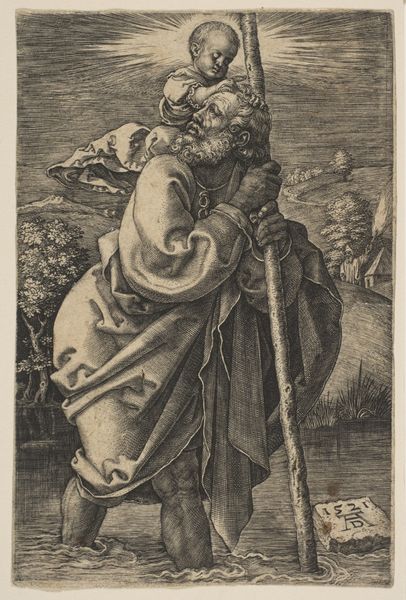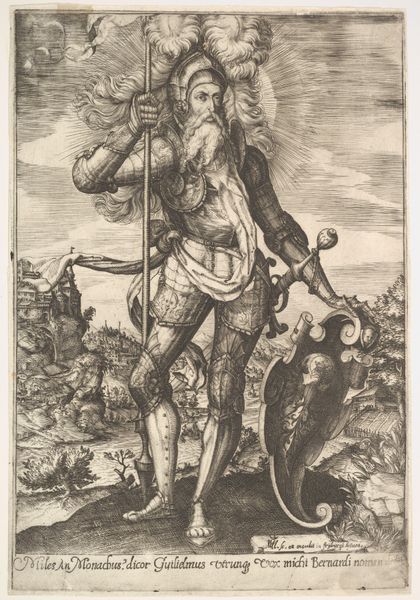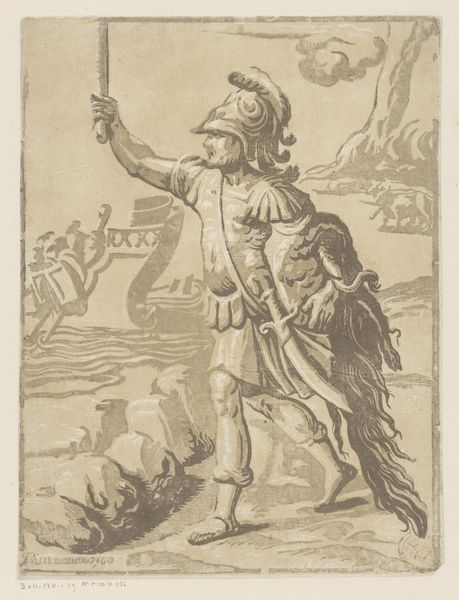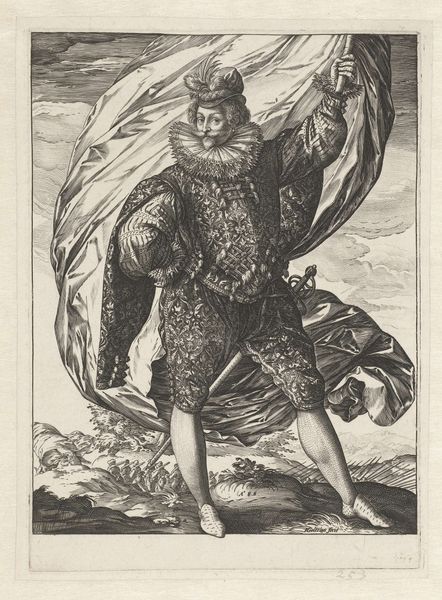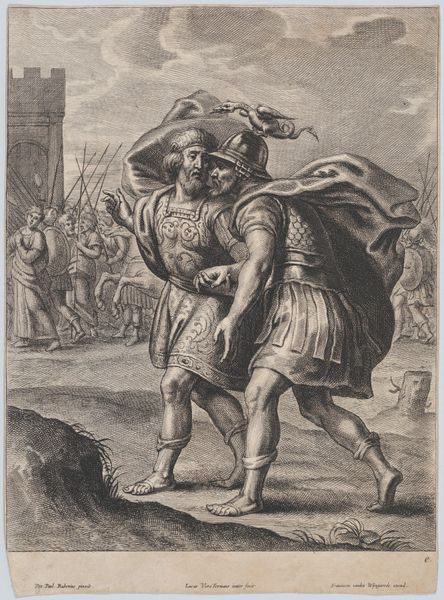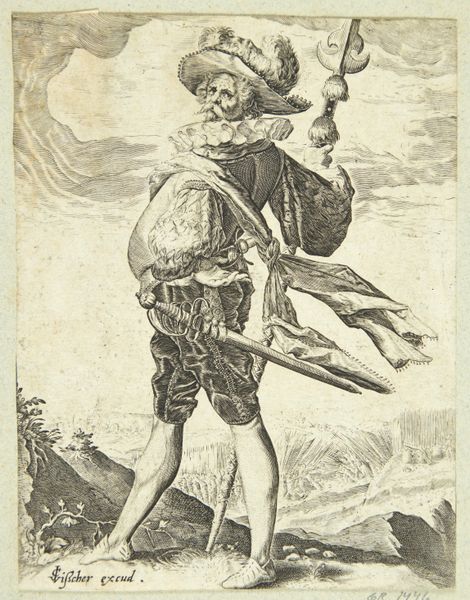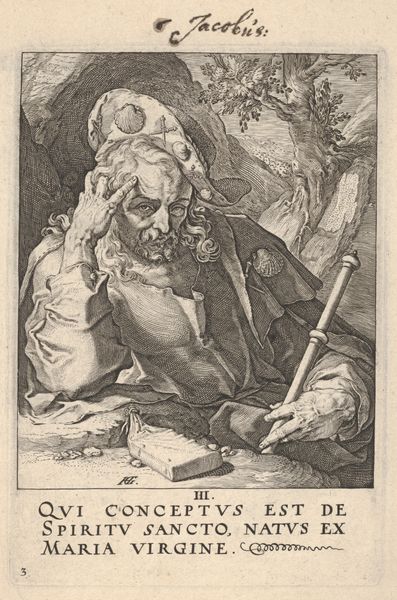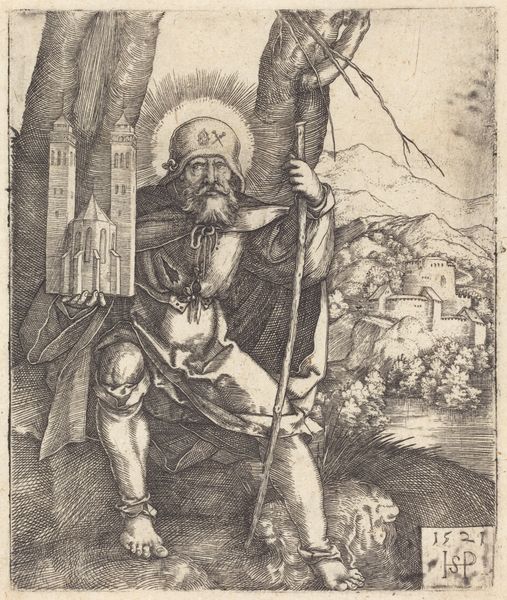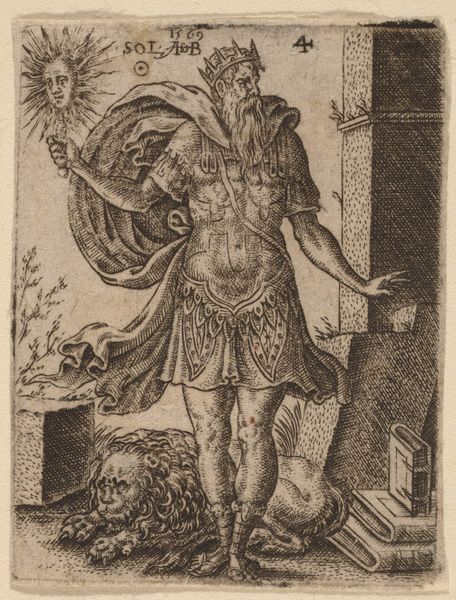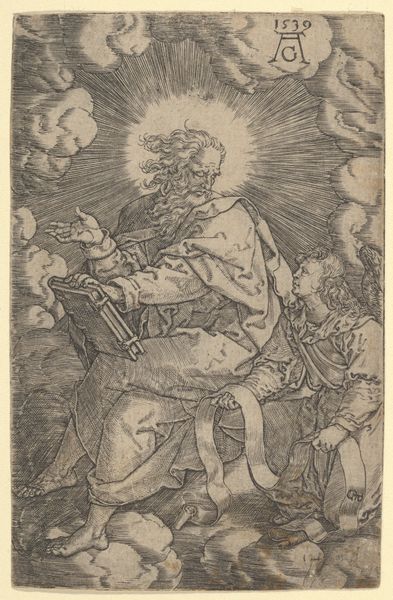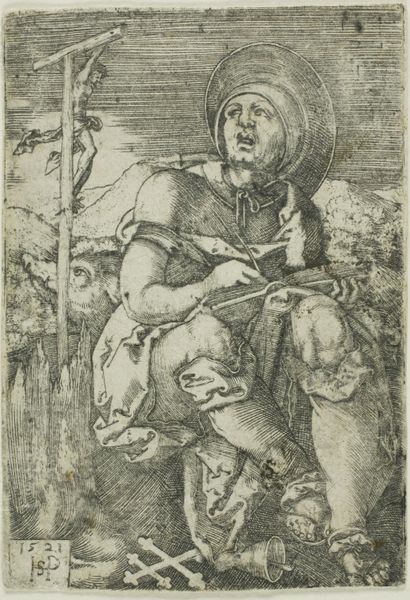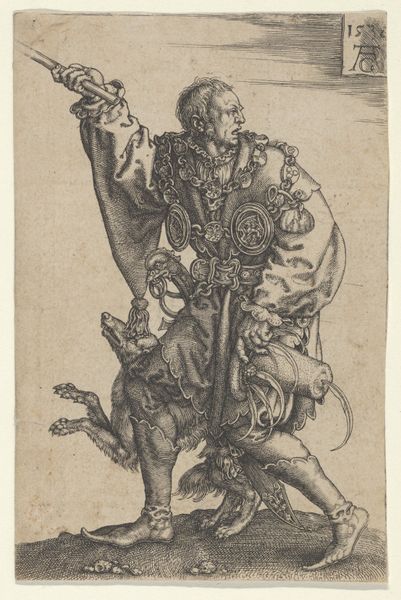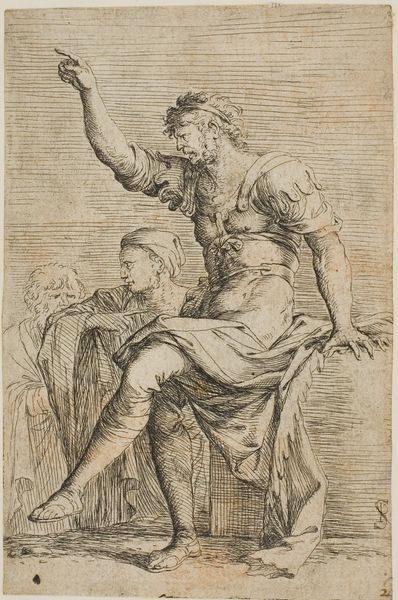
drawing, ink, pen
#
drawing
#
narrative-art
#
pen illustration
#
pen sketch
#
landscape
#
mannerism
#
figuration
#
ink
#
line
#
pen
#
history-painting
Dimensions: overall: 29.2 x 19.6 cm (11 1/2 x 7 11/16 in.)
Copyright: National Gallery of Art: CC0 1.0
Curator: This is "Saint Christopher (recto)" made around 1615 to 1620, an ink and pen drawing by Hermann Weyer. What strikes you first about it? Editor: There’s an intensity in the pen strokes that creates a chaotic, almost overwhelming sensation of movement. I get the impression of a really physical struggle. Curator: The physicality is key, isn't it? Weyer is dealing with the labor and sheer effort involved in the Saint's legendary crossing. We see this monumental figure, Saint Christopher, wading through turbulent waters, staff in hand, carrying the Christ Child on his shoulders. Think about the literal weight and burden implied. Editor: Exactly! I think that burden connects directly to the social context. The legend itself speaks to duty and the service of others, a hugely relevant concept when we consider Weyer was working during the Catholic Reformation. Was this intended as a commentary on the demands placed upon the common person? Curator: Perhaps. We know the narrative had particular resonance during that era. Consider also the materiality: the ink, the pen, readily available and easily reproduced. These pen illustrations were less precious than paintings and made art and religious devotion more accessible. Editor: I agree. And beyond simple devotion, I also see a subtle critique here. The looming architecture in the background contrasted with Christopher's earthbound struggle feels deliberately pointed. The power structures of the era looming over this ordinary man. There’s a tension between faith, labor, and social power. Curator: The medium lends itself well to this sort of intricate commentary. Pen and ink allows for these tiny details that would perhaps get lost in a fresco, for instance. Every line builds the scene’s larger narrative. Editor: Absolutely. The more I consider it, the more it emphasizes that crucial connection between art and the lived realities of people facing religious and political turmoil. Curator: Examining the social backdrop does allow a richer engagement with the work beyond simple admiration. Editor: Yes, and thinking about the material conditions through which it was made reminds me of art’s place as both artifact and a cultural tool, even within historical contexts.
Comments
No comments
Be the first to comment and join the conversation on the ultimate creative platform.
